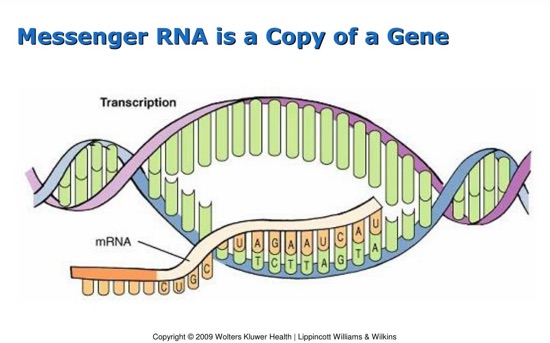News
26 April 2023
A new method for treating crops: RNA-based pesticides
In February 2015, hungerexplained.org had drawn attention to a new biotech method that could block certain genes and make them unable to play their role in the production of specific proteins by using the RNA1 interference technology.
This technology had been discovered in the 1990s. A first application in the field of agriculture had been performed on potatoes. Its objective was to reduce black spots due to bruising that appeared during storage. It was possible to block the synthesis of the protein responsible for the spots and the new potato variety obtained was approved by the US Department of Agriculture in 2015 [read].
Later, Monsanto/Bayer used this technology to eliminate maize rootworm larvae by creating a GM maize (approved in 2017 in the US by the Environmental Protection Agency). This variety of maize was made able, through genetic engineering, to produce insecticide proteins and an interfering RNA capable of blocking the larva’s production of vital proteins. This principle of double protection is increasingly adopted, as it makes adaptation (and resistance) of pests more difficult and less probable [read].

Maize rootworm larva
This technology is now at the basis of a new type of pesticide that can be sprayed to protect crops. The spray used contains an interfering RNA synthesized in a laboratory (often by using specially programmed microorganisms).2 This RNA, once absorbed by the pest, disrupts the production of one of its vital proteins.
It is worth recalling here that in a cell, proteins are produced during a process where bits of RNA are being read that contain a code specific to each protein. These RNAs, also called messenger RNAs, are replicas of bits of codes found in the DNA3 located in the cell’s nucleus. They are sent out of the nucleus to the cell’s cytoplasm where protein synthesis is performed.

The sprayed interfering RNA is designed in a way that it can disturb the production of a vital protein in the pest, by blocking the “good” RNA sent by the cell’s nucleus. Once the process impeded or stopped altogether, the pest dies, and that protects the plant and secures production.
The specificity of the interfering RNA for a given protein of the target pest allows the technology’s champions to claim that it creates no risk for other organisms, including for humans. Some scientists stress, however, that it is essential to check first that the genetic sequence targeted by the interfering RNA only exists in the target pest (and that is far from being sure), and that it (or a similar sequence) does not exist in other living organisms, as they could be impacted, thus generating a disequilibrium in the ecosystem.
There is another pending issue: once dropped in the environment, interfering RNAs (very large organic molecules) will be degraded, and no one knows what effect these degraded molecules left in the environment could have on targeted pests or on any other living organism [read].
It appears, therefore, that several issues remain to be resolved regarding the risks that this new type of method for combatting pests could present, and that it is high time that relevant studies be conducted to find all the answers before any authorisation can be granted for running field trials and, of course, before a possible approval for using these methods on a large scale can be given.
For the time being, it is also quite worrying to see that there is a legal void around this technology, because it is so new. This void is equivalent to giving full freedom to the labs of multinationals specialized in pesticides to carry out their activities in order to find, by all means, a way to combat the disequilibria created by an industrial agricultural model they want to preserve at any cost, so as to continue collecting their huge financial profits.
----------------------
Notes
-
1.RNA: ribonucleic acid.
-
2.Another possibility, still under studied, is to genetically engineer viruses or bacteria to make them able to produce the interfering RNA, and to release them in the field with the hope that they will be ingested by the target pests [listen, in French].
-
3.DNA: deoxyribonucleic acid.
————————————-
To know more:
Read:
-
•OECD, Considerations for the Environmental Risk Assessment of the Application of Sprayed or Externally Applied ds-RNA-Based Pesticides, Series on Pesticides No. 104,Environment Directorate, 2023.
-
•Shaffer, L., RNA-based pesticides aim to get around resistance problems, PNAS, 2020.
Listen:
-
•Les pesticides à ARN : dangers d’une révolution agricole, France Culture, 2023 (in French).
Selection of past articles on hungerexplained.org related to the topic:
Last update: April 2023
For your comments and reactions: hungerexpl@gmail.com


